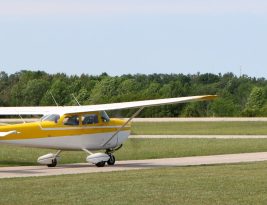In March we looked at the basics of how an internal combustion works. Your airplane’s engine is a four-cycle engine: on the intake stroke, a fuel/air mixture is drawn into the cylinder as the piston moves down; the mixture is then compressed on an upward piston stroke;
…Tag: flying
View All CategoriesLet me quote §61.103(b), “Be able to read, speak, write, and understand the English language…”. This here is one of the eligibility requirements for Private Pilots and every other Pilot Certificate for that matter. Throughout training, however, it seems as if we are learning an entirely new language consisting of
…This post on spins is derived from the FAA Airplane Flying Handbook, available from ASA in print and in PDF format.
A spin may be defined as an aggravated stall that results in what is termed “autorotation” wherein the airplane follows a downward corkscrew path. As the
…We’ve had a few posts about the Very High Frequency Omnidirectional Range (VOR). Take a look at our introduction and at our CFI’s posts on VOR service volumes and a couple questions that might show up on your exam. Today, we’ll
…A VFR Sectional Aeronautical Chart is a pictorial representation of a portion of the Earth’s surface upon which lines and symbols in a variety of colors represent features and/or details that can be seen on the Earth’s surface. Contour lines, shaded relief, color tints, obstruction symbols, and maximum elevation figures
…This week, we’re taking another look at aviation forecasts and focusing on the terminal aerodrome forecast (TAF), one of the printed forecasts that all pilots need to be familiar with. TAFs are designed to be useful in the preflight planning stage. Here’s how the FAA breaks down a TAF in
…Today we will finally wrap up our three part post on the pitot-static system and related instruments with a quick discussion on errors. If an error is noted on one of the three pitot-static instruments it is almost always caused by either a blockage in the pitot-tube or one of
…I am sure you have been waiting all week for Part II of the CFI Brief on the Pitot-Static system. So here it is: today we will get into some of the principals of operation of each of the three pitot-static instruments found in the cockpit: altimeter, vertical speed indicator,
…

